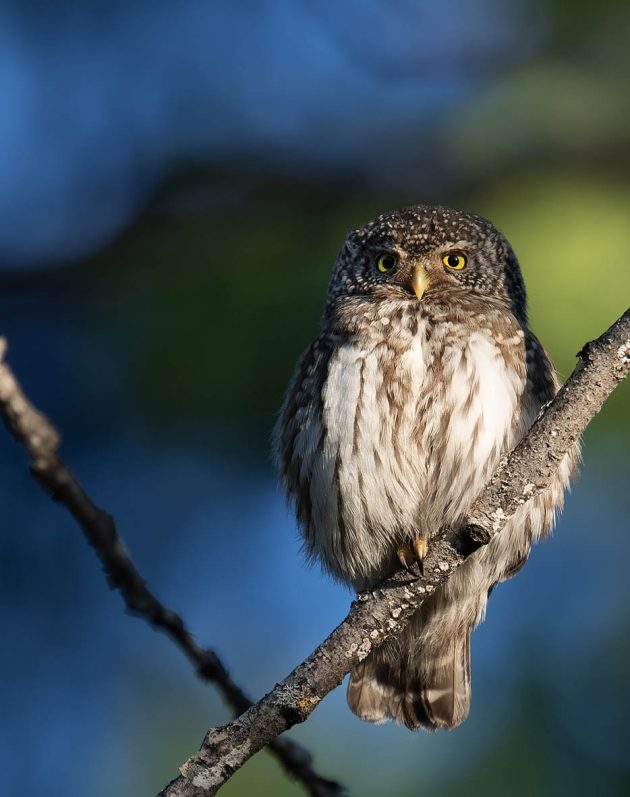The winter months are dark in the boreal forest. Hours of available hunting are low and temperatures are extremely low. It’s a miracle that anything can find sustenance and survive here. The birds that live here are tough and belong mainly to particular families of birds. Owls do particularly well here, the long nights actually working in their favour by increasing hunting time. That said, some owls will hunt during the low light hours of the day.

These birds depend heavily on the crop of rodents from the previous summer so their distribution and abundance is heavily dependent on the availability of their favourite prey. The Eagle Owl (Bubo bubo) is the largest owl up here, just on the northerly limit of its range. It needs to take prey larger than rodents and this marks their limit, hares probably being the main prey. Among the rodent specialists the largest is the Great Grey Owl (Strix nebulosa) closely followed by its cousin the Ural Owl (Strix uralensis). Among my favourites, and luckily quite active during the day, is the Hawk Owl (Surnia ulula). At the small end of the owl size range is the Pygmy Owl (Glaucidium passerinum).




Among the diurnal raptors, Golden Eagles (Aquila chrysaetos) will hunt along the forest edges for hare or some unsuspecting roe deer but they will also scavenge at carcasses. Rough-legged Buzzard (Buteo lagopus) effectively performs the rodent-catching role during the day, coming into competition with the more diurnal owls. Although you will often be in these forests in winter and not realise it, Eurasian Goshawks (Accipiter gentilis) are actually quite common. Their stealth predatory tactics, aimed at catching birds but also hares, keep them well among the trees.



The remaining species rely largely on seeds to survive the winter months. Some species, like the Eurasian Nutcracker (Nucifraga caryocatactes) will cache seeds during the summer and rely on their incredible memory to retrieve them in the winter. Woodpeckers will drill into the bark of trees in search of dormant grubs while also taking seeds. The smaller tits are equally adaptable. And there are the finches, which rely almost totally on seeds.




The bird diversity of these high latitudes is very low, especially in the winter. The few species that manage to remain up here all year are among the most resilient of birds. It is no coincidence that they are derived from just a few families and that they have diets capable of sustaining them through the winter. In the case of owls and some diurnal raptors it is meat – hunted or scavenged; in the case of woodpeckers, tits, finches and some corvids (including the nutcracker) it is a largely plant-based omnivory.



Source link
